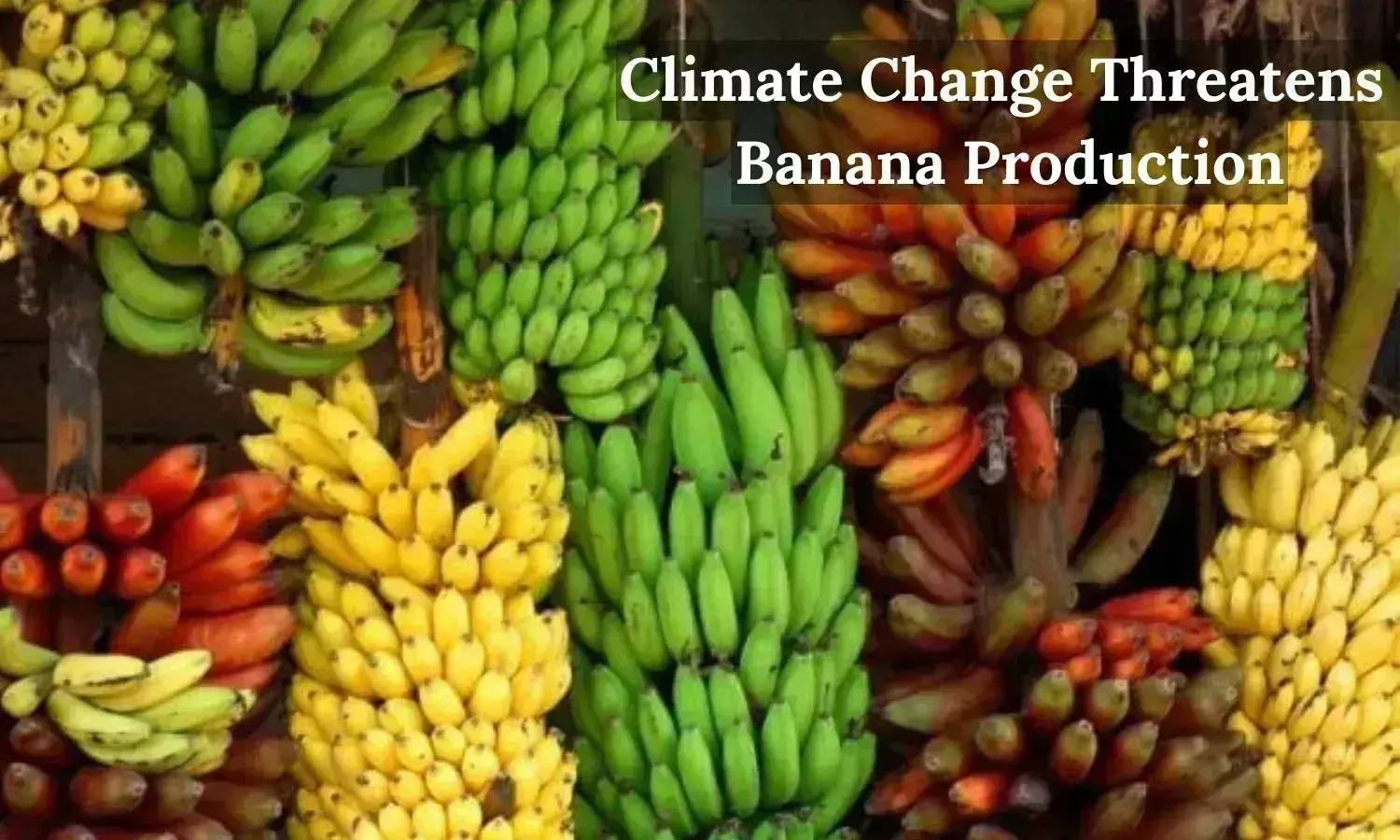Climate Change Threatens Global Banana Production
Bananas are a very important food. In fact, they are the fourth most eaten food in the world, after wheat, rice, and

Bananas are a very important food. In fact, they are the fourth most eaten food in the world, after wheat, rice, and corn. They give about 400 million people a big chunk (15-27%) of their daily calories. India grows the most bananas, but it's only the 12th largest exporter. Tamil Nadu grows bananas on the most land, but Maharashtra grows the most bananas per piece of land. This is because Maharashtra focuses on one type of banana (Cavendish) and uses good farming methods. India grows more than 20 types of bananas, because they can grow in many different climates. Bananas are grown on about 20% of India's farmland.
Most of the bananas grown in India are eaten in the country. They're made into things like puree for dairy products, baked goods, and baby food. Plantains are made into chips. Bananas are also used to make wine. You can get bananas all year round, they're cheap, and they're good for you. Plus, banana fiber is used to make things like bags, rope, and paper.
Bananas first came from India over 5,000 years ago. People there valued them for their health benefits and cultural importance. They began spreading around the world, starting with Alexander the Great taking them to the Middle East. Bananas are very important in Indian tradition and cooking.
However, climate change is hurting banana production. Things like extreme weather, rising temperatures, and changing rainfall are making it harder to grow bananas in India, including in places that export them like Maharashtra. A report by Christian Aid warns that banana production could drop a lot by 2050 unless farmers adapt. This would be bad for the 43% of India's people who work in farming. Also, as of 2018, 14% of India's population was undernourished, and climate change will make this worse by increasing problems with pests and diseases.
The Cavendish banana is the main type of banana that is exported because it tastes good, and produces a lot of fruit. Most of these bananas are produced in Latin America and the Caribbean. But this type of banana is very easily affected by climate change because it lacks variety.
New research shows that rising temperatures, extreme weather, and pests are harming banana production in Latin American and Caribbean countries like Guatemala, Costa Rica, and Colombia. This is reducing the amount of bananas grown and hurting farming communities. Christian Aid says that nearly two-thirds of the land in Latin America and the Caribbean that is good for growing bananas, may become unusable by 2080.
To lessen the impact of climate change on banana production, the following actions are crucial:
- Cut Emissions: Rich countries need to commit to big cuts in their pollution, in line with the Paris Agreement's goal to limit global warming to 1.5°C. Updated plans for these cuts are due in 2025.
- Polluter Pays Climate Finance: Wealthy countries, which caused most of the pollution in the past, should give money to poorer countries to help them deal with climate change. This money should come from new taxes on things that cause a lot of pollution, like fossil fuels, private jets, and superyachts.
- Invest in Resilience: Farmers in affected areas need help to find other ways to make money and to adapt to climate change. Funding should go towards things like better farming technology (e.g., drip irrigation, drought-resistant banana types), improved infrastructure, and new job opportunities.
- Consume Well: People in countries that import a lot of bananas should buy directly from the farmers and buy organic bananas. This helps farmers and also reduces the harm to the environment from the chemicals used in banana farming.

